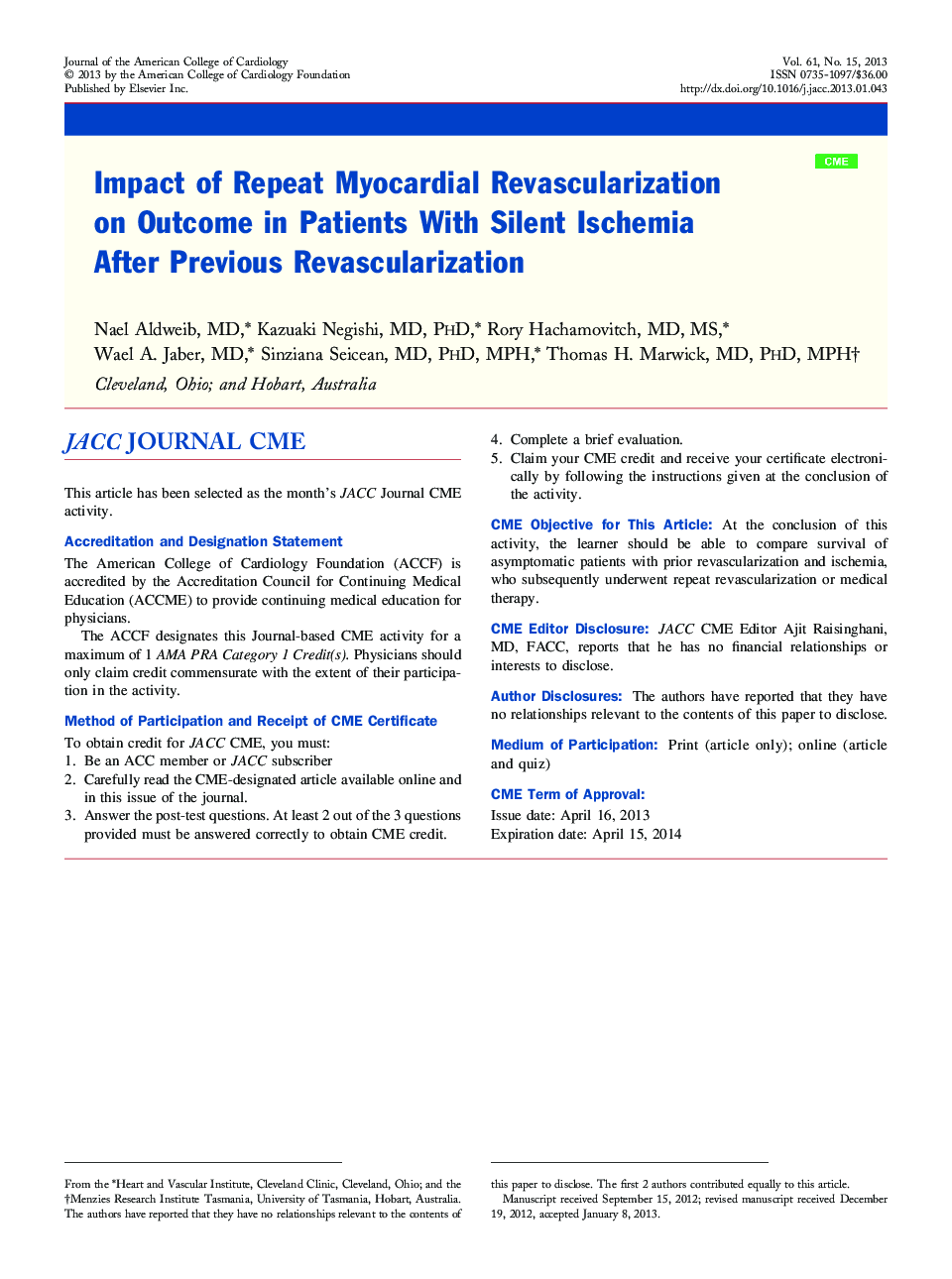| کد مقاله | کد نشریه | سال انتشار | مقاله انگلیسی | نسخه تمام متن |
|---|---|---|---|---|
| 2947963 | 1577163 | 2013 | 8 صفحه PDF | دانلود رایگان |

ObjectivesThis study sought to compare the survival of asymptomatic patients with previous revascularization and ischemia, who subsequently underwent repeat revascularization or medical therapy (MT).BackgroundCoronary artery disease is progressive and recurring; thus, stress myocardial perfusion scintigraphy (MPS) is widely used to identify ischemia in patients with previous revascularization.MethodsOf 6,750 patients with previous revascularization undergoing MPS between January 1, 2005, and December 31, 2007, we identified 769 patients (age 67.7 ± 9.5 years; 85% men) who had ischemia and were asymptomatic. A propensity score was developed to express the associations of revascularization. Patients were followed up over a median of 5.7 years (interquartile range: 4.7 to 6.4 years) for all-cause death. A Cox proportional hazards model was used to identify the association of revascularization with all-cause death, with and without adjustment for the propensity score. The model was repeated in propensity-matched groups undergoing MT versus revascularization.ResultsAmong 769 patients, 115 (15%) underwent revascularization a median of 13 days (interquartile range: 6 to 31 days) after MPS. There were 142 deaths; mortality with MT and revascularization were 18.3% and 19.1% (p = 0.84). In a Cox proportional hazards model (chi-square test = 89.4) adjusting for baseline characteristics, type of previous revascularization, MPS data, and propensity scores, only age and hypercholesterolemia but not revascularization were associated with mortality. This result was confirmed in a propensity-matched group.ConclusionsAsymptomatic patients with previous revascularization and inducible ischemia on MPS realize no survival benefit from repeat revascularization. In this group of post-revascularization patients, an ischemia-based treatment strategy did not alter mortality.
Journal: Journal of the American College of Cardiology - Volume 61, Issue 15, 16 April 2013, Pages 1616–1623